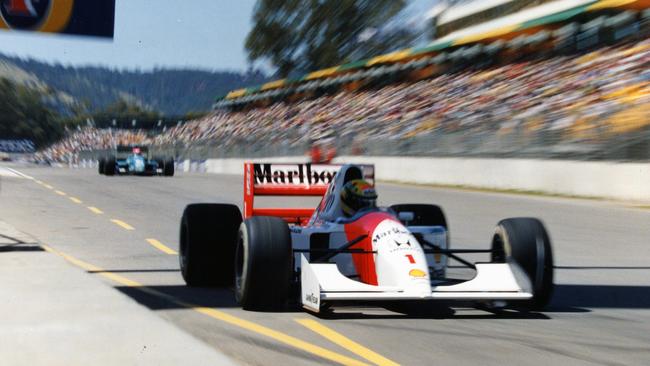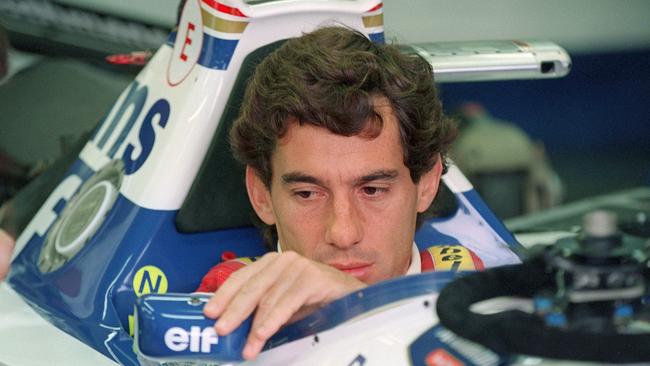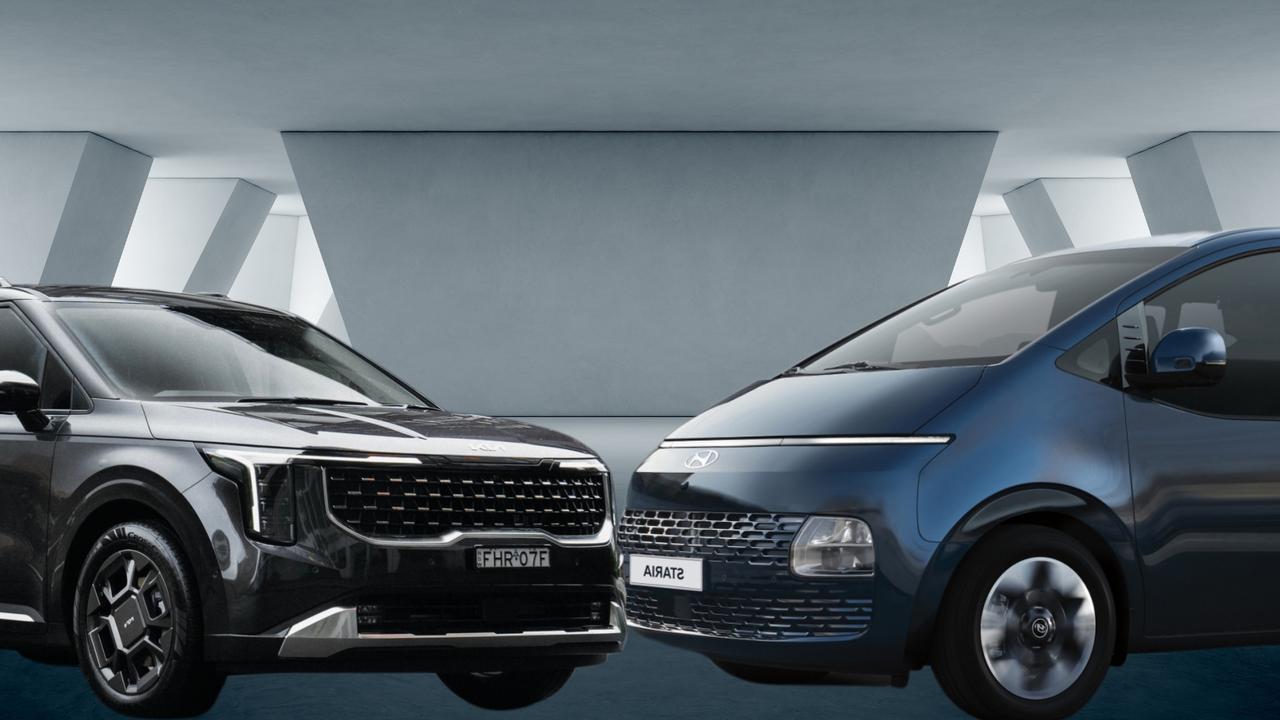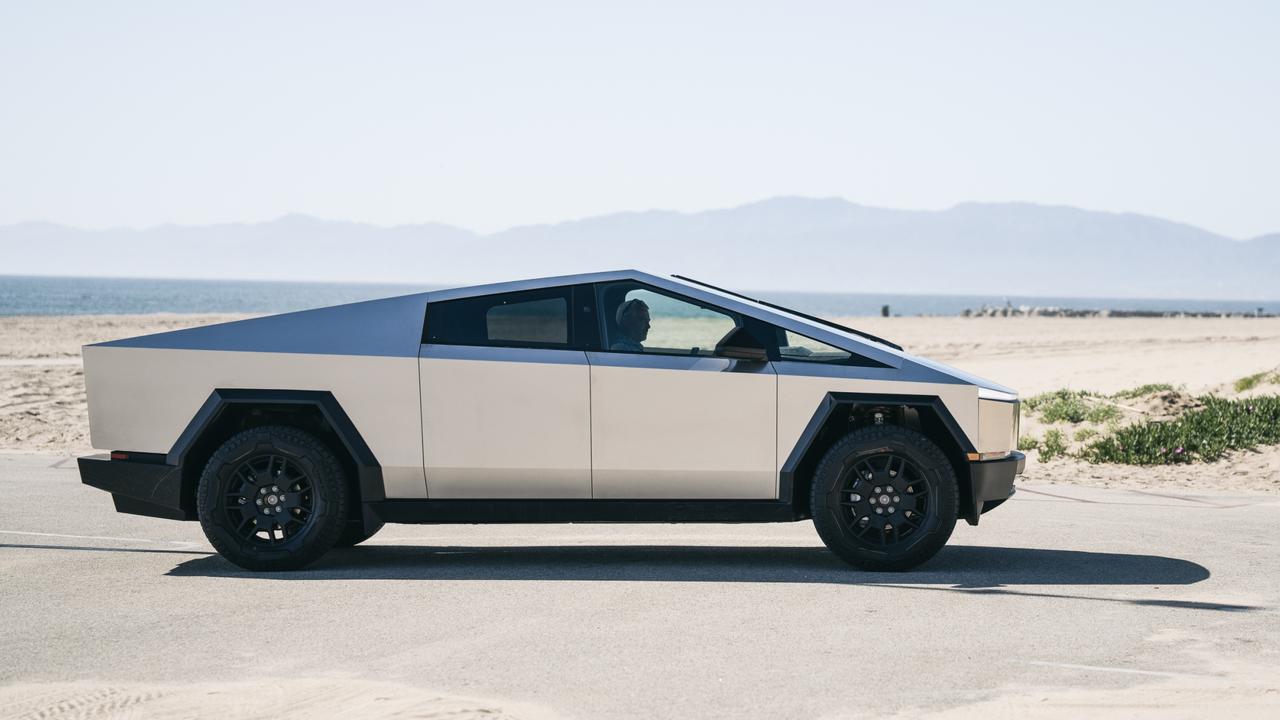
Roland Ratzenberger cut short the interview, telling the journalist: “Let’s finish this in the evening, I have no more time.” He ran to the pits, pulled on his helmet, desperate to qualify for his third F1 race. The day before, during the first qualifying session, Jordan driver Rubens Barrichello hit a kerb at 225km/hour. The car and driver went airborne. Rubens’ concussion was bad, but worse his tongue was blocking his airway and FIA legendary doctor Sid Watkins did a bit of quick bit of emergency surgery and saved his life. When Barrichello woke up in the medical centre, the first person he saw was Ayrton Senna looking over him.
At 1pm the next day Ratzenberger, 33, drove his fastest lap. But other drivers and pit crews could see there was a problem with his nose cone. Strangely, his Simtek team didn’t call him back into the pits. Coming into the right-hand Villeneuve Curve, his front wing detached, his steering went and the car was flying at 340km/hour and only stopped by a concrete retaining wall. The medical car was on the spot in less than 30 seconds. Watkins jumped out. He could see Ratzenberger had massive head injuries, he had no pulse and he was clinically dead. Sid had him pulled out of the car and started CPR. The heart started and the medical team kept his heart going on the way to the medical centre but he was dead. Senna effectively broke into the medical centre to check on Ratzenberger but Watkins blocked him.
Taking Senna outside, Watkins told the world’s greatest driver that his friend was dead. Senna broke down crying. Watkins asked him: “Ayrton, why don’t you withdraw from racing tomorrow? Why don’t you give it up altogether?”

It normally rains in Imola in May. But the first of May 1994, 30 years ago, was bright and sunny. At 2pm on the front row of the grid was Senna on pole for the 65th time; points leader Michael Schumacher in a Benneton-Ford was next to him. Seventeen minutes later, the world greatest F1 driver, a person bigger than God in Brazil, was dead.
“He streaked through the sport like a comet, an other-worldly superstar whose brilliance as a driver was matched by a dazzling intellect and coruscating charisma that illuminated Formula One racing as never before. No one tried harder or pushed himself further, nor did anyone shed so much light on the extremes to which only the greatest drivers go. Intensely introspective and passionate in the extreme, Ayrton Senna endlessly sought to extend his limits, to go faster than himself, a quest that ultimately made him a martyr but did not diminish his mystique,” says the F1 site.
Just before the Villeneuve Curve is Tamburello, a bend that had to be taken flat chat. If you have a moment of fear and ease off the throttle, your car takes control. Senna was ahead of Schumacher. The downforce on his Williams-Renault at 320km/hour as he entered Tamburello was 3.6g or about the same as a fighter pilot experiences in a high speed turn. The steering column broke, the car was sliding to the concrete wall. Senna braked but the car slammed into the wall. It bounced off, the right-hand side of the car torn off, three wheels broken off, one of the wheels hit Senna in the head, part of the suspension snapped and “broke through his visor, hitting his forehead like a bullet”.

What happened over the next few days became F1’s version of the Kennedy assassination. Laid out in detail in Tom Rubython’s book: Fatal Weekend (where most of the above is drawn from), the controversy includes whether it was driver error, whether the modified steering column broke before or after the prang, why Senna was not declared dead at the scene, why the team allowed Senna teammate Damon Hill to continue racing in the same car when they didn’t know what caused Senna to crash, why Williams technical director Patrick Head so urgently recovered the data recorders from the car, and why it took a month for Williams to hand the box to the investigators.
Once again F1 made changes to make racing safer. But the real lesson remains. F1 is an industry and nothing will get in the way of the dollars and the people who run it protecting themselves.
Meanwhile, given how many of you (two) ask for our advice on what cars to buy and avoid, we asked the good folks at US News to tell us what they have found. The most reliable used cars come from Korea, with the 2019 Kia Soul, 2019 Hyundai Tucson, and the 2020 Hyundai Accent topping the list. Over at Consumer Reports, they say Lexus, Toyota, and Mini are the three most reliable brands in their annual auto reliability brand rankings. In the naughty corner are Volvo, Jeep, VW and Mercedes.
JD Power say infotainment systems continue to be the biggest problem with cars. “Areas in the study that are infotainment-related include Android Auto/Apple CarPlay connectivity, built-in Bluetooth system connectivity, touchscreen/display screen difficult to use, not enough power plugs/USB ports and navigation system inaccurate/outdated map.”
And back here we’re chasing up (again) Ssanyong issues and lack of customer response, BMW service issues (again), and lots of others of your problems that don’t include alcohol, sex and elephants.
OK. Auction season is well under way with Mecum offering the usual collection of $7m-plus Feezers, a 1956 Mercedes-Benz 300SL Gullwing with luggage set for about $6m – the luggage set alone is worth a million – and a 1961 Red Porsche 217 20 HP two-cylinder tractor with radial cooling fan. Friends, if you are looking for something for the few acres around Bowral or Bellarine that will go perfectly with the Twiggy RM boots and Akubra hat, the Gina Driza-Bone and the Bentley Bentayga (official vehicle of Double Bay, Peppermint Grove and Toorak cowboys, cowgirls and cow-others) this is it. Prices have been stable over the last 63 years but that’s not to say they won’t rocket any day soon.
jc@jcp.com.au







